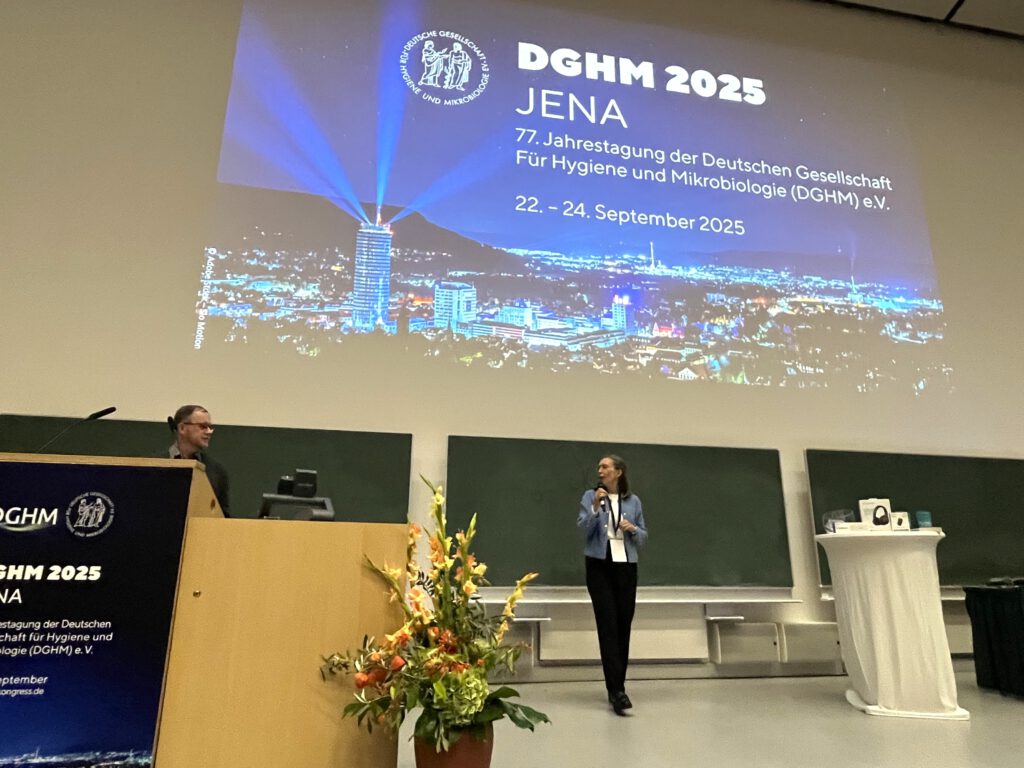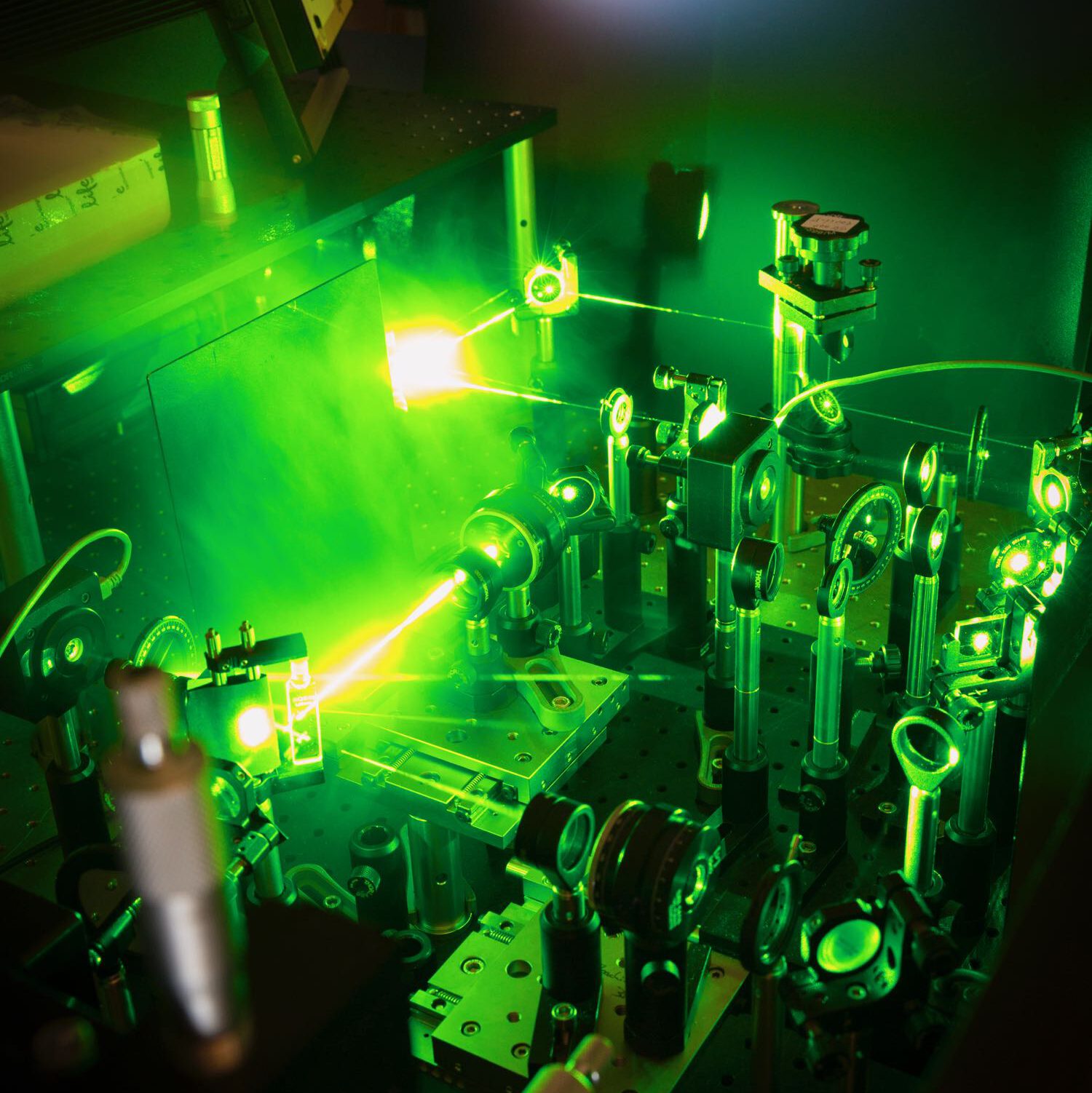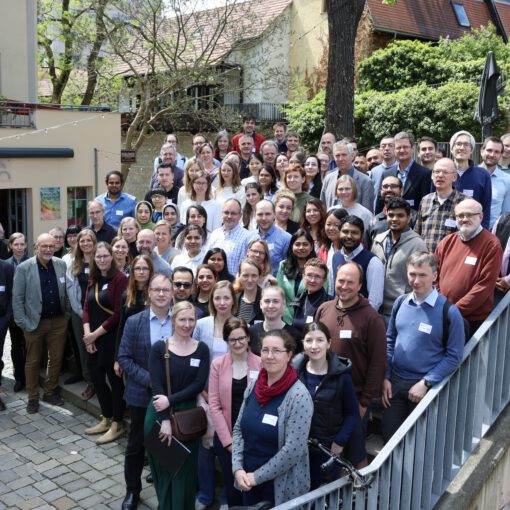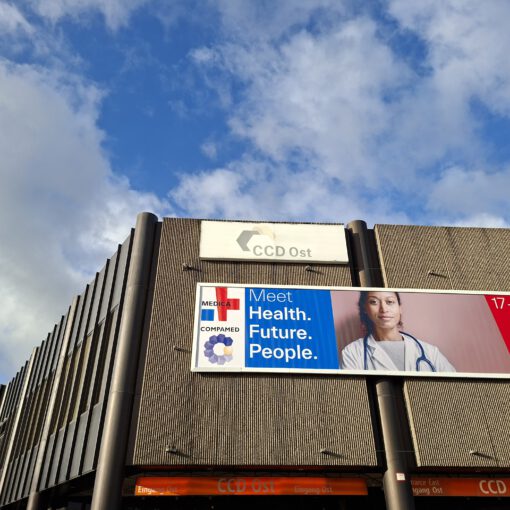Scientists from the Leibniz Institute of Photonic Technology, the University Hospital Jena and the Friedrich Schiller University Jena presented their current project results of the LPI basic technologies at this years’ annual meeting of the German Society for Hygiene and Microbiology (DGHM) from September 22-24. Their contributions gave insights into different applications of Raman spectroscopy, microfluidic reporter assays and a clinical case study.
RamanBioAssay™ for rapid antibiotic susceptibility testing
Klebsiella pneumoniae is one the most threatening bacterial pathogens. Since some strains are resistant against reserve antibiotics and can cause severe, often fatal infections, they are classified as “critical priority pathogens” by the WHO. Enghardt et al. expanded the RamanBioAssay™ platform to test the effectiveness of a carbapenem antibiotic against K. pneumoniae isolate. Using Raman spectroscopy, characteristic spectral changes were determined which allowed for the distinction between resistant and susceptible isolates within 90min after antibiotic treatment.
This label-free and precise diagnostic method could contribute to the significant acceleration and improvement of treating bacterial pathogens. The project is integrated into the LPI funding of the BMFTR.
Chip-based Raman spectroscopy against urinary tract infections
In light of rising antibiotic resistances, there is urgent need for user-friendly and reliable point of care tests which allow for fast identification of pathogens and evaluation of their antibiotic resistances. Winterfeld et al. work on the development of a chip-based testing method that provides the entire analysis process directly at the patient. Specifically, they focus on urinary tract infections because these rank among the most common bacterial diseases. The method is based on Raman spectroscopy which offers both high sensitivity and specificity. Because of the usage of metal-coated filters minimizes background interferences, the spectroscopy analysis can be conducted directly on the chip.
The assays will be available as a LPI basic technology and allow for a promt and specific therapy of urinary tract infections without the need for highly specialized laboratory staff.
Digital droplet-based reporter assays – microfluidic single-cell platforms
Droplet-based microfluidics opens up new paths for quantification and discrimination of bacterial pathogens. Reuter et al. presented a microfluidic chip for droplet generation, incubation and analysis of digital microbial single-cell reporter assays. The developed technology allows for parallel cultivation and optical evaluation of pathogenic single cells within the droplets. By means of chromogenic and fluorogenic reporter substrates enzymatic and metabolic activities can be visualized. Additionally, interactions between pathogens and drug compounds can be detected.
The assay technology will be a powerful LPI basic technology for parallelized bacterial on-chip cultivation and screening for infection diagnostics.
Clinical case study: Staphylococcus aureus and prosthetic joints
Staphylococcus aureus is a risk factor for endogenous infections, especially of prosthetic joints. The preventive treatment of the nasal bacterial colonizer can avert life-threatening disease. Monecke et al. showed a case study of a patient developing a severe infection after getting a porthetic knee. Molecular genotyping proved the pathogen in the knee aspirate and nasal isolates to be near-identical. Thus, the infection was resolved as an endogenous S. aureus colonization and immediately treated successfully.
Preventive decolonisation (e.g., with mupirocin) should therefore be standard practice prior to surgical procedures to minimize the risk for life-threatening infections. The study was realized in cooperation with the LPI.
Raman spectroscopy for characterization of macrophages
Macrophages are responsible for crucial immune response functions and thereby adopt different phenotypic states. Naumann et al. used Raman spectroscopy to investigate this functional phenotypic plasticity within both cell cultures and complex tissues. The spectral method was able to reliably differentiate the macrophage phenotypes in vitro based on characteristic spectral features. Furthermore, the researchers showed a translational application: Molecular changes were visualized in lung tissue ex vivo upon SARS-CoV-2 infection, for instance variations of the RNA and lipid metabolism.
The spectral method allows for a label-free and non-invasive analysis of the immune response which unveils new insights into the interaction of host cells and pathogens. The project was supported as part of the LPI and SARS-CoV-2Dx.

Picture: LPIgGmbH / Anne Fischer // DGHM, September 24, 2025 // Campus Ernst-Abbe-Platz, FSU Jena
We would like to thank all involved participants for their engaging contributions. The presented technologies and methods illustrate the progress of the LPI basic technologies which will be available within the LPI infrastructure prospectively and create important impulses for the translation into clinical settings.
Furthermore, we thank the conference chairs Prof. Dr. Bettina Löffler and Dr. Stefanie Deinhardt-Emmer.




